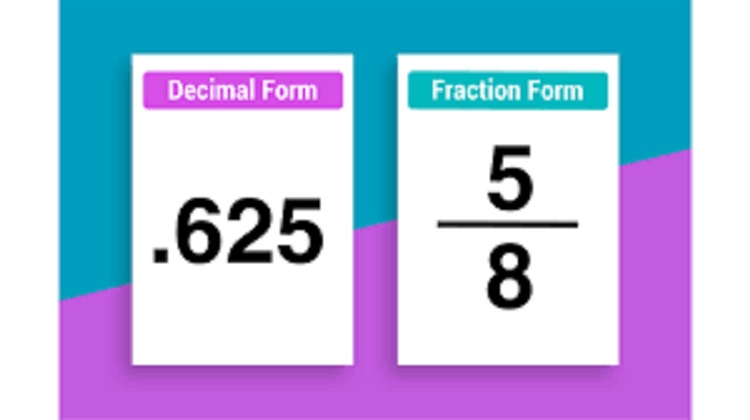Decimals can be an elusive number to convert to fractions and represent. One such decimal is.625, yet its existence remains mysterious and we shall reveal its simple beauty through fractionation. So come join us as we delve deeper into decimals and fractions together while shining light upon its exquisite representation: join our journey as we reveal its splendour!
Understanding Decimal Notation
Decimals are a way of representing parts of wholes by employing decimals as symbols to differentiate the whole number and its fractional equivalent, with decimals notation used to convert decimals to fractions. A number like “.625” would be read aloud as “point six two five.” To convert decimals to fractions we explore decimal notation techniques.
Basic Concepts in Converting Decimals to Fractions
Converting decimals to fractions involves identifying each place value after the decimal point and finding its equivalent fractional number; for instance in converting “.625:” the process would consist of finding its fractional equivalent and placing that figure alongside all digits after it. In this instance: “”625″”
The numeral 6 represents the tenths place, while 2 stands for hundredths place.
When expressed as fractions, these digits form the numerator; in their fractional representations they become denominators based on which place value was held by rightmost digit; for.625, that rightmost digit was 5, which corresponds to its designation in thousandths place.
Express.625 as a Fraction
Now let’s use all this data to express.625 as an exact fraction
Numerator = the numeral 6 in the tenths place and denominator = rightmost place value of number 5, such as in thousandths place.
Therefore, when representing 625/1000 as a fraction, write it as 625/1000.
Simplifying the Fraction
While 625/1000 accurately represents.625 as a fraction, it can be simplified even further to its lowest terms by divisng both numerator and denominator by 125 and then dividing both by this figure to arrive at:
1000625÷125125=85
Hence, .625 simplifies to the fraction 58.
Visualizing Fractions: To visualize fractions visually, divide a whole into eight equal parts that each represent one-eighth. Shade five parts to capture its essence and you have illustrated what constitutes one eighth.
This visualization highlights the fractional concept inherent to decimal 625.
Application in Real-World Scenarios
Acknowledging fractional representation of decimals is more than an academic exercise; it finds practical applications across various areas such as finance, measurements and engineering where precise communication requires both decimals and fractions for communication purposes. Converting between them brings clarity while streamlining communication processes.
Mathematical Insight: (Convert.625 to decimals)
Understanding decimals and fractions provides valuable insight into their fundamental relationship. Every decimal is equivalent to one fraction, with its place value providing for easy conversion between numbers of any place value – further emphasizing unity within this diverse language of numbers.
Beyond 625: Exploring Patterns for Growth
Explorations of.625 as a fraction invite us to investigate decimals further, where conversion reveals patterns within this realm of numbers. Converting shows us how decimals with multiple powers of 10 in their denominator correspond directly with an increase of decimal places based on denominator power; providing us with an ongoing framework for turning different magnitude decimals into fractions.
Conclusions:
In an elegant dance between decimals and fractions, the conversion of.625 into fractions presents one challenge after another.Mathematical beauty finds expression through identification of place values and subsequent creation of fractions, thus unveiling their hidden unity. Furthermore, decimals expressed as fractions have practical application by increasing communication precision and clarity.
As we navigate the intricate realm of numbers, each decimal becomes a chapter to tell in fractional language. From.625 up through its vast mathematical possibilities, conversion allows us to appreciate how intricately numerical expression weaves itself together in its tapestry of numbers – such as decimals and fractions working harmoniously together as music! In all their simple elegance Echoing its core value of unity within diversity of numerical language.
